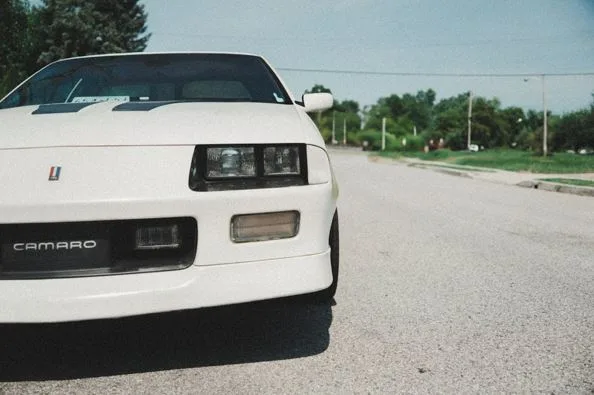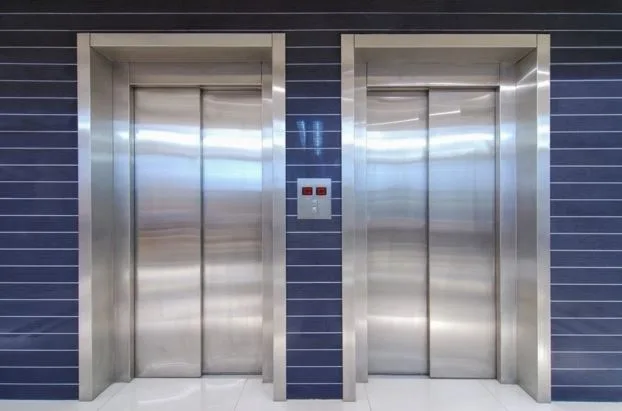Beat the Heat, Protect Your Ride: The Smart Choice for Window Tinting in Round Rock
The Texas sun is notorious for its intensity, especially during the long summer months. For residents and drivers in Round Rock, finding effective ways to combat the heat isn’t just about comfort—it’s about protecting investments and enhancing daily life. This is where professional window tinting Round Rock TX steps in, offering a multitude of benefits that extend far beyond mere aesthetics. From shielding your car’s interior to significantly reducing energy bills in your home, the advantages are clear and compelling.
Meta Description: Discover the unparalleled benefits of window tinting Round Rock TX, from superior heat rejection and UV protection to enhanced privacy and extended interior longevity for your vehicle and home.
The Relentless Texas Sun and Your Sanctuary
In Round Rock, the sun can be an adversary, turning cars into ovens and homes into saunas. The scorching heat isn’t just uncomfortable; it’s actively damaging. Prolonged exposure to intense UV rays can lead to significant wear and tear on your vehicle’s interior, causing dashboards to crack, upholstery to fade, and leather to become brittle. Similarly, in homes, UV exposure can prematurely age furniture, flooring, and artwork, diminishing their vibrancy and value over time.
Beyond physical damage, the sun’s glare can be a significant driving hazard, reducing visibility and increasing eye strain. For homeowners, unrelenting sunlight can create uncomfortable hot spots, forcing air conditioning systems to work harder and driving up energy consumption. Addressing these issues proactively is key to maintaining comfort, preserving assets, and ultimately, saving money.
A Shield Against the Heat: The Power of Heat Rejection
One of the most immediate and impactful benefits of window tinting, especially in a climate like Round Rock’s, is its ability to reject solar heat. High-quality window films are engineered to block a significant portion of the sun’s infrared (IR) rays, which are primarily responsible for heat buildup.
- Cooler Interiors: By preventing a substantial amount of solar energy from penetrating your windows, tinting keeps your car’s cabin or your home’s rooms noticeably cooler. This means less reliance on air conditioning.
- Reduced Energy Consumption: For vehicles, a cooler interior translates to less strain on the AC, improving fuel efficiency. In homes, it means lower electricity bills as your HVAC system doesn’t have to work as hard to maintain a comfortable temperature.
- Enhanced Comfort: Imagine stepping into your car on a hot summer day and not being hit by a wave of stifling heat. Or relaxing in your living room without feeling a hot spot by the window. Tinting creates a more consistently comfortable environment.
Modern window films utilize advanced technologies, such as ceramic particles, to scatter and block IR radiation with remarkable efficiency. This allows for excellent heat rejection without necessarily requiring a very dark tint, preserving natural light while still providing superior thermal comfort.
The Invisible Threat: UV Protection
Beyond heat, the sun emits harmful ultraviolet (UV) rays, which pose a serious threat to both your health and the longevity of your belongings. Most standard vehicle and home windows offer minimal protection against these insidious rays.
- Safeguarding Your Skin: Prolonged exposure to UV radiation can lead to skin damage, premature aging, and an increased risk of skin cancer. Window tint acts as a crucial barrier, blocking up to 99% of these harmful UVA and UVB rays, essentially providing a permanent layer of sunscreen while you’re indoors or driving.
- Preserving Interior Aesthetics: UV rays are a primary culprit behind fading, cracking, and discoloration of vehicle upholstery, dashboards, and interior plastics. In homes, they can damage expensive furniture, hardwood floors, and valuable artwork. Window tinting significantly extends the lifespan and maintains the original appearance of these investments, protecting them from sun-induced degradation.
- Protecting Electronics: Excessive heat and UV exposure can also negatively impact electronic devices left in vehicles or near windows, leading to overheating or shortened lifespans. Tint helps regulate internal temperatures, safeguarding your gadgets.
The protection offered by window tinting is an investment in both personal well-being and the financial value of your assets.
Glare Reduction and Enhanced Visibility
Driving in direct sunlight or having bright glare stream into your home can be incredibly distracting and even dangerous. Window tinting dramatically reduces glare, leading to a safer and more enjoyable experience.
- Improved Driving Safety: Glare from the sun, headlights, or reflective surfaces can impair visibility, forcing you to squint or lose focus on the road. Tinted windows significantly cut down on this glare, allowing for clearer vision and reducing eye strain, which is particularly beneficial during sunrise and sunset hours in Round Rock.
- Increased Indoor Comfort: For those working or relaxing near windows, screen glare on computers or televisions can be a constant annoyance. Window tinting softens the incoming light, making it easier on your eyes and improving productivity and relaxation.
- Better Aesthetics and View: By minimizing harsh reflections and excessive brightness, tinted windows can actually enhance your view of the outside world, making landscapes appear clearer and more vibrant without the discomfort of blinding light.
This improvement in visibility contributes to a more comfortable and secure environment, whether you’re behind the wheel or enjoying your home.
Privacy and Security: An Added Layer of Protection
Window tinting offers more than just environmental and protective benefits; it also provides a significant boost to privacy and security.
- Deterring Theft: Darker window tints make it much harder for outsiders to see into your vehicle or home, discouraging potential thieves who might otherwise be drawn to visible valuables. This added layer of obscurity can act as a powerful deterrent against break-ins.
- Personal Privacy: Enjoy a greater sense of privacy in your vehicle, especially when parked or in traffic. For homes, tinting can prevent nosy neighbors or passersby from peering directly into your living spaces, allowing you to feel more comfortable and unobserved.
- Shatter Resistance: In the event of an accident or impact, window film can help hold shattered glass together, preventing dangerous shards from flying and potentially causing injury to occupants. This is a subtle yet important safety feature often overlooked.
While tinting provides privacy, reputable installers will always ensure that the Visible Light Transmission (VLT) levels comply with local regulations, balancing privacy with legal requirements.
Legal Considerations for Window Tinting in Texas
Before investing in window tinting, it’s crucial to understand the legal regulations in Texas to ensure compliance. The Texas Department of Public Safety (DPS) enforces laws governing the darkness and reflectivity of window films.
- Visible Light Transmission (VLT): This refers to the percentage of visible light that can pass through the tinted window. A lower VLT percentage indicates a darker tint.
- Windshield: Tinting is allowed on the windshield above the manufacturer’s AS-1 line (typically the top 5-6 inches) or the top six inches if no line is present. This tint cannot be darker than 25% VLT and can have up to 25% reflectivity. Clear, untinted UV film can be applied anywhere on the windshield without VLT reduction.
- Front Side Windows: These windows (driver and front passenger) must allow more than 25% of light to pass through (i.e., a minimum of 25% VLT). Reflectivity cannot exceed 25%.
- Back Side Windows and Rear Window: There are no restrictions on the darkness of these windows for cars, SUVs, or vans. However, if the rear window is tinted, the vehicle must be equipped with dual side mirrors to ensure proper visibility of the roadway behind. Reflectivity for rear side windows is also limited to 25%.
- Prohibited Colors: Texas law prohibits red, amber, and blue tints on any vehicle windows.
- Certification Label: Manufacturers are required to provide a certification label, which should be affixed between the film and glass on the driver’s side front window, indicating compliance with state regulations.
- Medical Exemptions: Individuals with certain medical conditions (e.g., lupus, photosensitivity) that require protection from sunlight can apply for a medical exemption, allowing for darker tint on the front side windows with a physician’s written statement.
It’s always recommended to consult with a professional tinting service in Round Rock, TX, as they are knowledgeable about current regulations and can ensure your installation is fully compliant, helping you avoid potential fines or inspection failures.
The Technology Behind the Tint
Modern window tinting is far more advanced than the simple dyed films of the past. Today’s automotive and architectural window films leverage sophisticated technology to deliver superior performance.
- Dyed Films: These are the most basic and affordable, offering privacy and some glare reduction, but less effective at heat rejection and prone to fading over time.
- Metalized Films: These films incorporate tiny metal particles that reflect heat and UV rays. While effective, they can sometimes interfere with electronic signals (GPS, cell phones, radio) due to their metallic content.
- Carbon Films: Using carbon particles, these films offer excellent heat rejection and UV protection without the metallic interference. They provide a rich, non-reflective black finish that won’t fade.
- Ceramic Films: Representing the pinnacle of window film technology, ceramic tints are infused with microscopic ceramic particles that are non-metallic and non-conductive. They excel at blocking infrared heat and UV rays without interfering with electronic signals. Ceramic films offer exceptional clarity, durability, and superior performance, often providing significant heat rejection even in lighter shades.
- Hybrid Films: These combine different materials, such as dyed and metalized layers, to offer a balance of benefits at a more affordable price point.
Choosing the right type of film depends on your specific needs, budget, and desired performance. A reputable tinting professional can guide you through the options and help you select the best solution for your vehicle or property.
Professional Installation: The Key to Lasting Results
While DIY tinting kits are available, professional installation is paramount to achieving a flawless finish and maximizing the benefits of your window film. A professional service brings expertise, specialized tools, and high-quality materials to the table.
- Precision Cutting: Professionals use computer-aided cutting systems to ensure a perfect fit for every window, minimizing gaps and imperfections.
- Bubble-Free Application: Achieving a smooth, bubble-free, and wrinkle-free finish requires skill and experience. Professionals meticulously prepare the surface and use proper techniques to ensure a clean application.
- Adhesion and Durability: Quality installation ensures proper adhesion, preventing bubbling, peeling, or cracking over time, which can plague DIY attempts.
- Warranty Protection: Reputable tinting services offer warranties on both the film and the installation, providing peace of mind and protecting your investment.
- Compliance with Laws: As mentioned, professionals are well-versed in local tinting laws and can ensure your vehicle or property remains compliant, saving you from potential legal issues.
Investing in professional window tinting ensures that you reap all the advertised benefits, from superior heat and UV rejection to enhanced aesthetics and longevity.
Conclusion: A Smart Investment for Round Rock Life
In the sun-drenched landscape of Round Rock, TX, window tinting is not just a luxury; it’s a practical and beneficial investment for both your vehicle and your home. The advantages are multi-faceted, encompassing superior heat rejection, unparalleled UV protection for health and interior preservation, enhanced driving visibility, increased privacy, and added security. By understanding the diverse types of film technologies available and opting for professional installation, you can transform your everyday environment into a more comfortable, protected, and energy-efficient space. Make the smart choice to protect your assets and enhance your daily experience under the Texas sun.
FAQ’s
Q1: How dark can I tint my car windows in Round Rock, TX?
A1: In Texas, the front side windows (driver and front passenger) must allow at least 25% of visible light to pass through. The back side windows and rear window can be tinted to any darkness, provided the vehicle has dual side mirrors. The windshield can only be tinted above the AS-1 line or the top 5-6 inches.
Q2: Will window tinting interfere with my car’s electronics or GPS?
A2: Older metalized window films could sometimes interfere with electronic signals. However, modern carbon and ceramic window films are non-metallic and designed specifically to avoid such interference, ensuring your GPS, cell phone, and radio signals remain clear.
Q3: How long does window tinting last?
A3: The lifespan of window tint depends on the quality of the film and the installation. High-quality professional-grade films, especially ceramic or carbon, can last for 5 to 10 years or even longer without bubbling, peeling, or fading. Inferior films or poor installation will degrade much faster.
Q4: Can window tinting really save me money on energy bills?
A4: Yes, absolutely. By significantly reducing the amount of solar heat entering your home or vehicle, window tinting lessens the workload on your air conditioning system. This reduced energy consumption directly translates to lower electricity bills for your home and improved fuel efficiency for your car, leading to tangible savings over time.
Q5: Is window tinting difficult to clean or maintain?
A5: Not at all. Once properly cured (usually a few days after installation), tinted windows can be cleaned with a soft cloth and a non-ammonia-based window cleaner. Ammonia can damage certain types of tint film. Your installer can provide specific cleaning recommendations for your chosen film.




